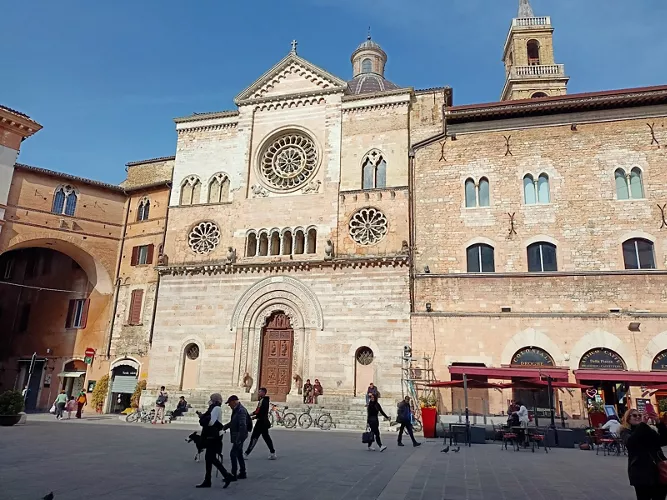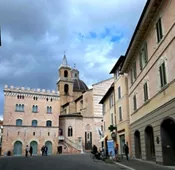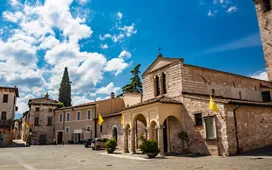This content was automatically translated. View the original text.



Overview
The lowland city of Foligno is significantly different from the classic Umbrian hillside village. It was founded before the year 1000, next to what was once "Fulginia", a small town that came under Roman control in the early 3rd century BC. Urban development started between the 11th and 12th centuries, peaking in the mid-14th century. The occupation by the papal army of Eugene IV in 1439 marked the end of the city's autonomy. Foligno, with its characteristic egg shape, has at its centre Piazza della Repubblica, which houses the main civil and religious buildings. It is surrounded by a maze of labyrinthine streets and smaller squares, which form the outer ring of the city behind the neat rows of the main buildings. Between the Unification of Italy and the 1930s, the city gates and part of the walls were completely demolished. Today, Foligno appears (wrongly) to be a city without a clear identity, whose only distinctive feature is the modernity of the sixteenth-eighteenth layout. This makes it hard to see the ancient city beneath, overwhelmed by the profound changes in architectural styles and building uses, partly as a result of bombing during World War II. Nevertheless, Foligno is a treasure trove of art: the Perugian Renaissance has left its mark on the Nunziatella Oratory, Palazzo Trinci preserves traces of the early 15th-century international Gothic style, while contemporary art can be seen at the CIAC, the Italian Centre for Contemporary Art. Another contemporary element is the Church of St Paul, designed by Massimiliano Fuksas and Doriana Mandrelli Fuksas in 2009. Meanwhile, the cathedral, built back in the 12th century, has undergone a series of changes that have radically altered its original design. The main façade was renovated in the early 1900s, while the interior was refurbished according to a neoclassical design by Luigi Vanvitelli and Giuseppe Piermarini. The most interesting part is the 16th-century Blessed Sacrament Chapel, decorated with frescoes by Vespasiano Strada. A few kilometres to the east of the town, you can visit the abbey of Sassovivo. Perched on the slopes of Mount Aguzzo and surrounded by a dense forest of holm oaks, its main feature is the beautiful 13th-century cloister.
06034 Foligno PG, Italia